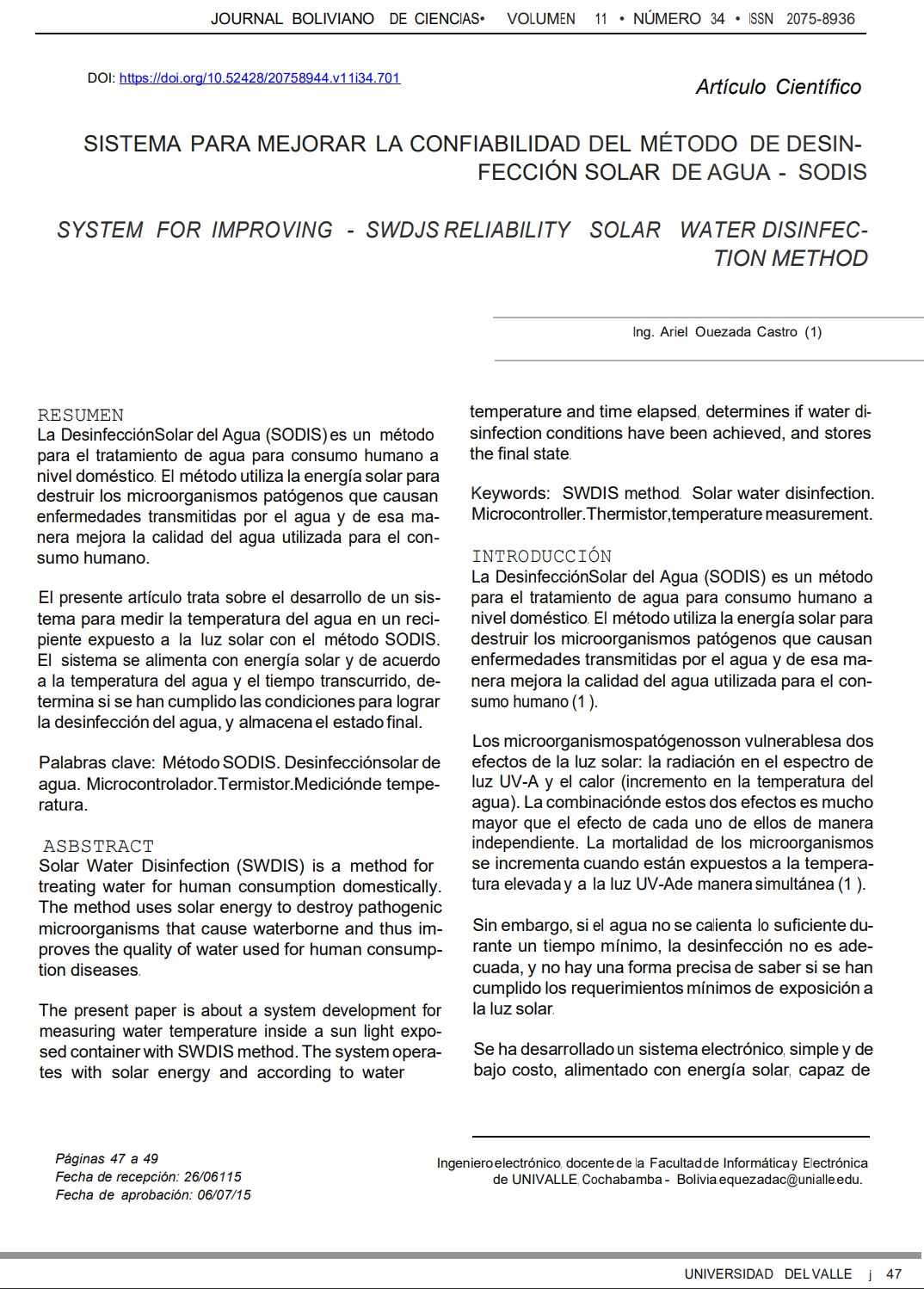System for Improving SWDIS Reliability Solar Water Disinfection Method
DOI:
https://doi.org/10.52428/20758944.v11i34.701Keywords:
SWDIS method, Solar water disinfection, Microcontroller, Thermistor, Temperature measurementAbstract
Solar Water Disinfection (SWDIS) is a method for treating water for human consumption domestically. The method uses solar energy to destroy pathogenic microorganisms that cause waterborne and thus improves the quality of water used for human consumption diseases. The present paper is about a system development for measuring water temperature inside a sun light exposed container with SWDIS method. The system operates with solar energy and according to water emperature and time elapsed, determines if water disinfection conditions have been achieved, and stores the final state.
Downloads
References
(1 )FUNDACIÓN 80018 (julio de 2005). Desinfección solar del agua- Guía de aplicación. La Paz; Weinberg; 2005.
(2) ATMEL CORPORATION. ATtiny13A. 2012. www.atmel.com/lmages/doc8126.pdf. (Diciembre de 2014).
(3) CAMERA D. Newbie's Guide to AVR Timer's. 2014. http://www.tourwalledcubicle.com/AVRArticles.php. (Diciembrede 2014).

Downloads
Published
How to Cite
Issue
Section
License
Copyright (c) 2015 Ariel Quezada Castro

This work is licensed under a Creative Commons Attribution 4.0 International License.
Authors who publish with this journal agree to the following terms:
- Authors retain copyright and grant the journal right of first publication with the work simultaneously licensed under a Creative Commons Attribution License 4.0 that allows others to share the work with an acknowledgement of the work's authorship and initial publication in this journal.
- Authors are able to enter into separate, additional contractual arrangements for the non-exclusive distribution of the journal's published version of the work (e.g., post it to an institutional repository or publish it in a book), with an acknowledgement of its initial publication in this journal.
- Authors are permitted and encouraged to post their work online (e.g., in institutional repositories or on their website) prior to and during the submission process, as it can lead to productive exchanges, as well as earlier and greater citation of published work.














